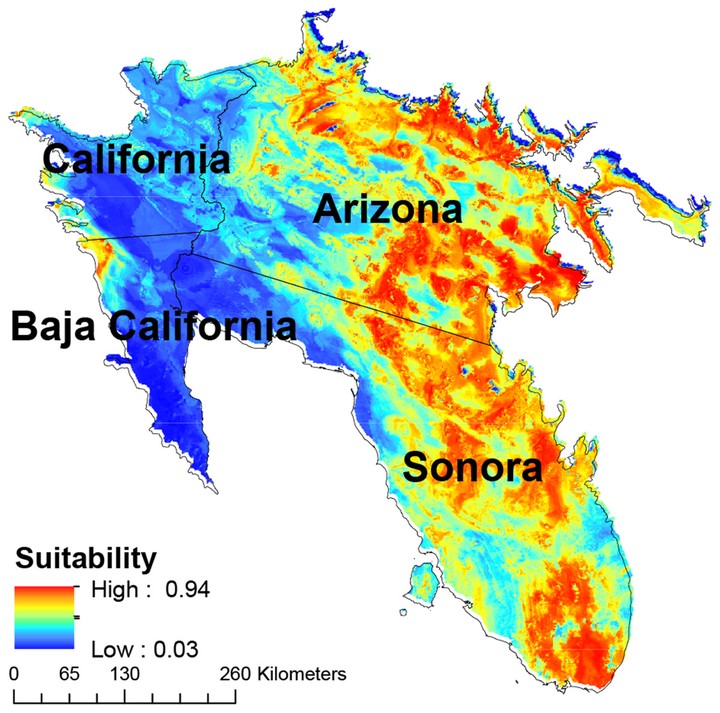 Image credit:
Image credit:
Abstract
Over the last decades several studies have identified that the directional changes in climate induced by anthropogenic emissions of greenhouse gases are affecting the ecology of desert ecosystems. In the Southwest United States, the impacts of climate change to plant abundance and distribution have already been reported, including in the Sonoran Desert ecosystem, home of the iconic Saguaro (Carnegiea gigantea). Hence, there is an urgent need to assess the potential impacts of climate change on the saguaro. The goals of this study are to provide a map of actual habitat suitability (1), describe the relationships between abiotic predictors and the saguaro distribution at regional extents (2), and describe the potential effect of climate change on the spatial distribution of the saguaro (3). Species Distribution Modeling (SDM) was used to investigate the relationships between abiotic variables and the Saguaro distribution. SDMs were calibrated using presence records, 2,000 randomly-generated pseudo absences, and ten abiotic variables. Of these, annual precipitation and max temperature of the warmest month was found to have the greatest relative influence on saguaro distribution. SDMs indicated that 6.9% and 8.1% of the current suitable habitat is predicted to be lost by 2050 and 2070, respectively. Therefore, predicted changes in climate may result in a substantial contraction of the suitable habitat for saguaro over the next century. By identifying the drivers of saguaro distribution and assessing potential changes in habitat suitability due to climate change, this study will help practitioners to design more comprehensive strategies to conserve the saguaro in the face of climate change.